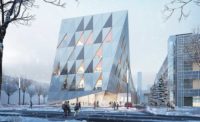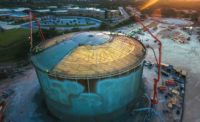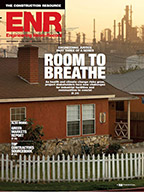The increase in private work has balanced out shortfalls on the public side. "Certainly, the government market is experiencing some downward pressure, but there is work out there," says Terry Dunn, CEO of JE Dunn Construction. He says multi-unit residential is strong, and investment-related work, such as hotels and commercial offices, is coming on line. "We enjoyed 8% to 10% growth last year and are hoping that holds up this year. I am not ready to pop the champagne cork yet, but there are positive signs in many of the markets we serve," he says.
The upswing in private work has gone counter to previous construction recessions, when the industry relied on government to prime the pump to turn the industry around. "For the first time in U.S. history, a post-recession recovery is being carried by the private sector versus the public sector," says Jim Karambelas, CEO of GLY Construction.
Many contractors believe the industry is still a year or more away from full prosperity. "Most economic forecasts call for incremental growth for the next two to three years—likely in the 8%-a-year range," says Paul Little, CEO of Panattoni Construction. But he worries that budget deficits both here and abroad may keep the industry "in a low-growth, low-interest-rate, low-inflation environment for the foreseeable future."
"Real construction activity is likely 18 to 24 months off, but people are talking about projects again," says Eric Hedlund, COO of Sundt. "I think we're on the upswing but still in a fairly fragile economy," says Jeff Stone, COO of Brasfield & Gorrie. "We're definitely not back to where we were in 2007 and 2008, before the big downturn. We have several years ahead of us before we get back to that point, but we're on the right trajectory," Stone says.
Business Is Back
Manufacturing is enjoying a renaissance. "Many corporate clients are feeling bullish," says Eberwein. He says there are a variety of factors that should boost the sector for many years to come, including the emergence of an international middle class that demands American products and the ability of U.S. manufacturers to offer higher-quality products at lower costs due to low energy costs and low-interest-rate borrowing.
Another factor fueling the corporate building increase is competition for young, creative professionals who would like a redesigned workplace: more collaborative, more open, less cubicle-oriented, greener and healthier, Eberwein says. "This has led to an uptick in office work, corporate headquarters and campuses with not only reinvented workspaces but also health clubs, daycare, cafes, etc.," he says.
The manufacturing market should continue to remain healthy. "Our indicators tell us that manufacturing will continue to be on the upswing for the next five to 10 years," says Stephen Gray, CEO of Gray Construction. He says worker shortages may hinder some manufacturers. But "some manufacturers believe comprehensive immigration reform could shrink this gap without displacing American workers."
The new surge in manufacturing plants might not lead to the kind of job creation sought by local communities. "We put in industrial rail yards in a lot of these plants, and they are being built to be highly automated," says Jeffrey Levy, CEO of RailWorks. He says that many of these projects are conversions of existing plants. "A plant that used to employ hundreds may only employ a few dozen now," he says.






Post a comment to this article
Report Abusive Comment